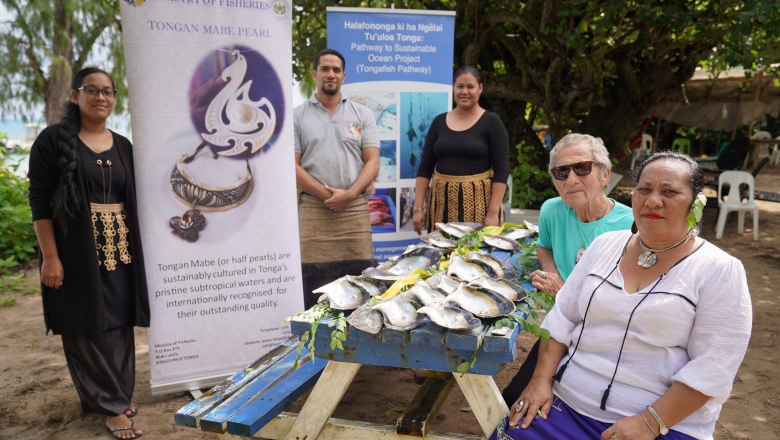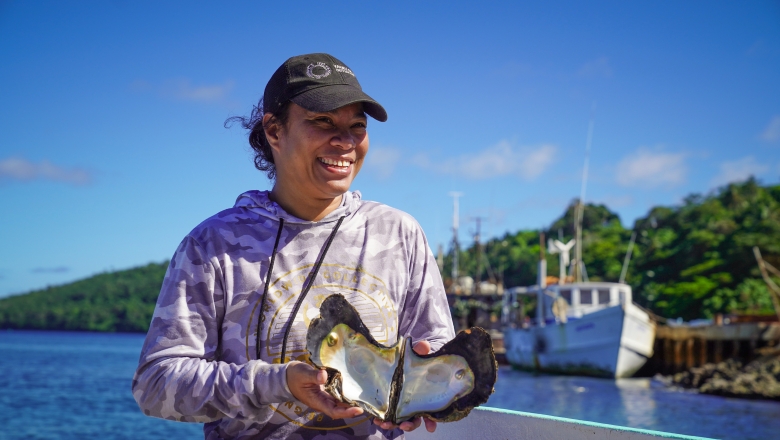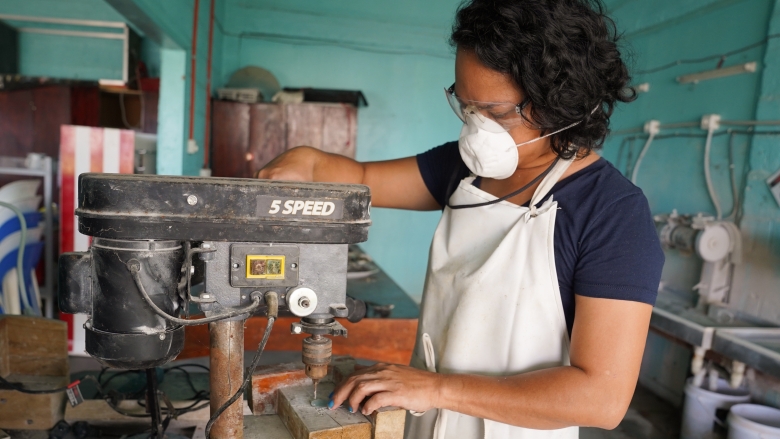Ana and Earl Emberson have had a tough run. In 2018, Cyclone Gita, the strongest- storm to ever hit the Kingdom of Tonga, left them and six other family members trapped under wreckage of their business on tiny Pangaimotu Island. It took them over an hour to find an escape route.
“When we came out, I cried,” said Ana. Their buildings were destroyed, and their oyster lines – where they grow mabé pearls – were gone.
“I sat down and cried, then I called my family to help us to rebuild it again.”
Sadly, nature wasn’t yet done with them. In 2020, Cyclone Harold destroyed their lines again. They rebuilt their pearl farm – again – but now they had nobody to sell to. The COVID-19 pandemic ended tourist traffic to their boutique day resort.
Quick intervention by Tonga’s Ministry of Fisheries is helping to turn things around. With support from the World Bank’s Pathway to Sustainable Oceans (Tonga) Project, the Ministry supplemented their business and skills development efforts, with an urgent push to find new markets for farmers facing income loss.
The Ministry organised a shipment of mabé pearl samples to Hawai’i in February this year. Following a successful pilot, they began regular shipments in May.

Fisheries Marketing Officer, Michael Po’uliva’ati explains that since the lockdown in March 2020, there have been “no customers, no sales until the project opened up exports for them this year in February.”
Fai’ana Fukofuka runs her family’s business on the island of ‘Ofu. It is part of the Vava’u group of islands, home to the first pearl farms. The 30 year-old managed a boutique resort and a whale-watching operation, as well as their pearl farm, established in 2018. With borders closed, all their income now has to come from pearls.


